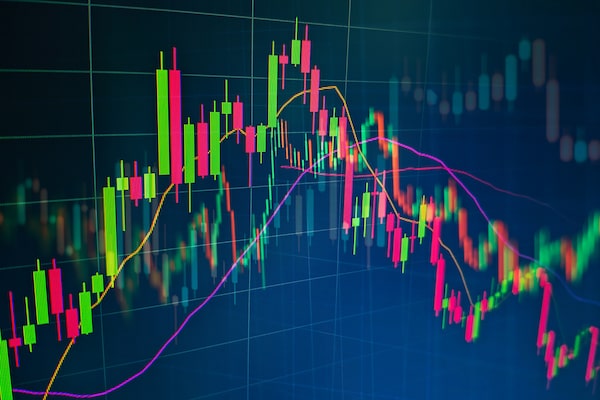
After getting burned by bonds when interest rates soared in 2022, some clients may be skeptical of the securities when cash-like instruments offer generous yields.Maximusnd/iStockPhoto / Getty Images
Sign up for the Globe Advisor weekly newsletter for professional financial advisors. For more from Globe Advisor, visit our homepage.
This year was supposed to mark a comeback for bonds.
Falling interest rates would finally lift prices, propelling fixed income returns in portfolios. Yet, many clients may be asking why the asset class has failed to live up to expectations.
“Outcomes have been a little different than anticipated,” says Chris Chapman, head of global multi-sector fixed income with Manulife Investment Management in Boston. “At the end of last year, the market got collectively ahead of itself.”
Many investors believed last December that the Bank of Canada, the U.S. Federal Reserve Board and other central banks would cut interest rates early and often in 2024.
“We were primed for as many as six rate cuts from the Fed, which in retrospect seemed pretty unrealistic given the strength of the economy at the time,” says Elvis Picardo, senior portfolio manager with iA Private Wealth Inc. and partner with Luft Financial in Vancouver.
That’s likely left a lot of advisors engaging in conversations with clients about fixed income again, an asset class that experienced double-digit percentage losses alongside losses in equity markets in 2022.
“That was a shock to the system, as one of the worst years in decades for balanced portfolios,” adds Mr. Picardo, referring to portfolios with 60 per cent in stocks and 40 per cent in bonds falling about 16 per cent on average that year.
Bonds and balanced portfolios have started to recover since. Yet, many advisors are likely facing a lingering question from clients: Why are they investing in bonds yielding less than 4 per cent – while the asset class has fallen in value in their portfolios – when guaranteed investment certificates (GICs) and money markets pay 4 to 5 per cent?
Advisors have a more optimistic answer for clients now.
“We’re realistically looking at the Fed starting that [interest rate] cutting cycle in September at the earliest,” Mr. Chapman says, noting yields currently reflect that outcome.
Persistent inflation in the U.S., where the economy remains stronger than expected, led yields on 10-year U.S. Treasuries to climb from 3.8 per cent in December to about 4.7 per cent in April before coming back down to around 4.3 per cent.
The Bank of Canada already made its first cut in four years earlier this month, leading to yields on 10-year government bonds decreasing about 60 basis points from their year-to-date peak of 3.85 per cent in late April.
“We’re more positive than we’ve been in a while on bonds,” says Evan Mancer, president and chief investment officer with Cardinal Capital Management Inc. in Winnipeg.
For much of the past decade and a half, Mr. Mancer, like many other advisors, allocated capital cautiously to bonds, keeping durations short.
“Lately, we’ve been adding duration,” Mr. Mancer says, noting the fixed income sleeve in his portfolios now averages about five-and-half years.
Corporate bonds, especially from utilities, banks and pipeline companies, are typically more attractive than government issues, offering yields in the 4- to 5-per-cent range, he adds.
Mr. Chapman says AAA-rated bonds are less attractive today, with a narrow spread over the risk-free return. Slightly lower investment grades – AA, A and even BBB – generate yields between 5 and 5.5 per cent.
“We’re comfortable taking a little bit of risk there,” he says.
The tailwinds for bonds are likely to grow throughout the year and into 2025, says Konstantin Boehmer, head of fixed income for Mackenzie Investments.
“I could even see a path where there are more cuts than expected,” he says about the Bank of Canada, in particular, “as the economy starts to show dark clouds” in the coming months.
Current yields for U.S. Treasuries predict cuts for this year, too, he adds.
Other nations including Australia, Germany, Sweden and Brazil are also likely to see interest rates fall, Mr. Boehmer says, while a few outliers such as Japan and China are more likely to see their interest rates hold steady or rise.
Cardinal’s clients mostly own individual Canadian bonds and a few U.S. issues, Mr. Mancer says.
In contrast, Mr. Picardo’s clients’ fixed income holdings are a mix of bond funds providing domestic, U.S. and international exposure.
“When you have foreign bonds, you have currency risk that needs to be managed,” he says, noting the international funds he uses are hedged to Canadian dollars.
Despite a better outlook for bonds, Mr. Picardo is still cautious. In a balanced portfolio, he recommends keeping a larger cash position depending on the client.
He further explains that bonds could still be volatile, especially for retired and retiring clients needing income over the next five years, while cash-like high-interest savings account exchange-traded funds pay about 5 per cent while offering liquidity and without short-term volatility.
Some clients still ask about GICs, to which he answers that although their interest rates are attractive, they may not be upon renewal. “For investors, it’s very alluring to think that they’re getting 4 or 5 per cent in perpetuity, but that’s not the case.”
As well, while bond yields have underperformed cash recently, their total return is likely to lead to outperformance if interest rates come down, Mr. Boehmer says.
“In Canada, we’re likely at the beginning of a rate-cutting cycle, and that tends to be better for fixed income than cash and GICs,” he says.
Generally, yields are higher than they’ve been over the past 15 years, enabling fixed income to fulfill its traditional role as a counterbalance to falling equities and slowing economic growth, he adds. “That negative correlation is back.”
For more from Globe Advisor, visit our homepage.
Editor’s note: This article has been updated to clarify that Elvis Picardo's recommended cash position depends on the client.